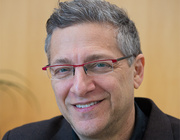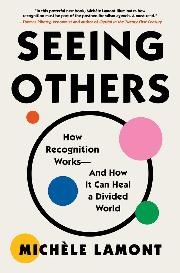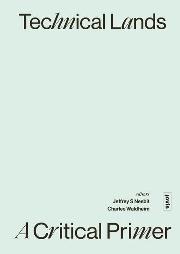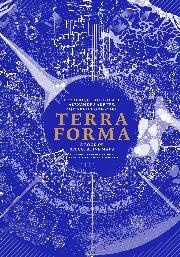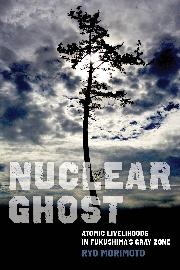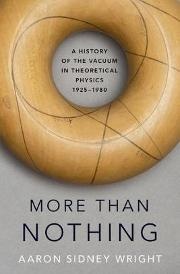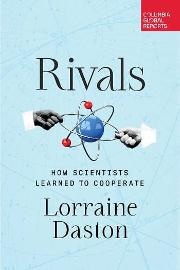Citation:

Read on Critical Inquiry's blog
Full Text
Five decades ago, Critical Inquiry was in its formative moment. Its editors identified a kind of exemplary triad—author, topic, writing—that should characterize the journal:
We sought critics who value examination of the assumptions underlying particular discriminations about works of art. . . . [and] criticism that aspires to be a special kind of “learning”—not in any sense dispassionate or impersonal but something akin to that fusion of human commitment with objectivity that Michael Polanyi characterizes as “personal knowledge.” . . . The critics we wished to publish were those who formulate fruitful and exciting questions about works of art . . . no matter where their explorations lead them.
Though a brief note like this one is hardly adequate, it is intriguing to look back at what strikes me as a double break, the first marked by the establishment of the journal, productively crossing disciplines and opening the way for a broader conversation in the humanities—and the second by an expansion around 1980 that effectively redefined the journal.
The original incarnation of Critical Inquiry embraced a triad of related commitments. First, in those early days, the journal aimed at authors whom the editors saw, and presumably the authors themselves saw, as critics. Second, the targets of their criticism would be works of art. From the broader context of that first editorial note, the arts in question were principally literature and the visual arts. Certainly, there were disagreements (for example, about the status of the author in literature), but in their method we see a third commitment: a journal that deliberately did not ground itself in the historical. Connecting the three vertices, the critic—the literary, music, or arts critic—looks in from the outside to evaluate, frame, and arrive at a characterization of the works of art that would be as universal as possible.
Casting one’s eyes over the twenty most-cited articles from Critical Inquiry, a few features stand out. All were issued after 1978: six from 1980–89, seven from 1990–99; four from 2000–09; and three from 2010–19. Michel Foucault’s “The Subject and Power” (1982), the most cited piece in the history of the journal, pointed the way (alongside so much else in his work) for many Critical Inquiry articles that followed. Foucault began with a suite of negatives: his was not a theory, not a method, not a phenomenology of power, and not a philosophical foundation of power. Unsaid but evident, Foucault never considered himself a critic of literature or of the arts. Indeed, he wrote scathingly of the hermeneutics of suspicion that threw a dubious light on schemes to cast the real below the visible. Not for him a Marxist, Weberian, or Freudian reduction to a putatively more substantial basis. Foucault’s aim, as he saw it, was to track the ways that persons become subjects, zeroing in on the history of sexuality as an approach to the making of the self in its changing historical manifestations.
Bruno Latour asked “Why has Critique Run out of Steam? From Matters of Fact to Matters of Concern” in 2004. Second in citation frequency only to Foucault’s article, Latour’s criticism of criticism echoes some of Foucault’s doubts about the hermeneutics of suspicion. Principally, though, Latour’s was not a plea for reaction—being un-critical—but rather an effort to bolster what he called a stubbornly realist attitude (after William James); less an attack, and more a commitment to the planetary climate that became for him, increasingly in the first two decades of the twenty-first century, “matters of concern.”
Numerous of these most-frequently cited articles in the post-1982 period took questions of power, imperialism, and postcolonialism as central topics. Text and representation are through-themes, but the setting of their analysis favors relations of power and history over eternal formal structures. Gayatri Spivak’s “Three Women’s Texts and a Critique of Imperialism” (1985); Arif Dirlik’s “The Postcolonial Aura: Third World Criticism from the Age of Capitalism” (1985); Edward Said’s “Representing the Colonized: Anthropology’s Interlocutors” (1989); and Kwame Anthony Appiah’s “Is the Post- in Postmodernism the Post- in Postcolonialism?” (1991) embody this shift in the journal’s treatment of its subjects. Not only does the discipline of history need to confront anthropocentric changes, Dipesh Chakrabarty contends in “The Climate of History: Four Theses” (2009), but the accepted categories of that discipline, alongside modernity and the division between the natural and the human, must also come under a critical gaze.
A second cluster of articles focused on subjectification: the production (under conditions of power) of the subject and subjectivity, expressly focused on the self and sexuality. A central theme of Foucault’s later work, it is taken up in some of the journal’s most-often cited articles. Here one thinks of Joan Scott’s often-invoked essay transforming “The Evidence of Experience” from a bottom-line, self-evident, and transhistorical category into something that is produced and contingent, bringing gender to immediate attention as part of this history. Here too would be Lauren Berlant’s exploration of the produced subjectivity of everyday comportment, “Slow Death (Sovereignty, Obesity, Lateral Agency)” (2007); this builds on her and Michael Warner’s article, “Sex in Public,” from the 1998 special issue on intimacy (Berlant’s introduction to that issue is itself also among the top twenty cited articles from Critical Inquiry), which aimed to bring the domestic, the therapeutic, the desires of the nonpublic into historical and specific analysis. Sander L. Gilman crossed race and female sexuality in his (1985) analysis of the late nineteenth century across art, science, and medicine, while Nicholas Mirzoef’s “The Right to Look” (2011) pits a subjective, willing self-disclosure to another (or others) against an authoritarian nonconsensual “visuality.” Perhaps the most dramatic form of subjectivity-interrogation comes with Jacques Derrida’s (2002) exploration, “The Animal That Therefore I Am (More to Follow),” as it pressed on the not-quite or not-yet reciprocal gaze of human and animal.
A third theme structuring many of these oft-read articles is narrative. Paul Ricoeur eschewed both achronological models and physics-based concepts of chronology in “Narrative Time” (1980); instead, he aimed to use plot as the structuring frame that organizes events phenomenologically. Hayden White examined, in “The Value of Narrativity in the Representation of Reality” (1980), non-narrarative forms of historical accounting—the annals and the chronicle are his examples—not as failed narratives but rather as alternative productions of reality, throwing into (questionable) relief the notion that narrative has a unique hold on reality. A decade later, in “The Narrative Construction of Reality” (1991), Jerome Bruner built on his career-long argument around the conviction that we are not all, at root, in life, logicians or physicists of the spacetime manifold, nor Piagetians following a fixed script of cognitive competence. Instead, we compose reality out of an assortment of narratives in the form of “stories, excuses, myths, and reasons.” All three of these authors contended that the concept of narrative—variable and located, not universal—was constitutive of our grasp of reality, time, and history. Narrative was not an optional feature, but instead a contingent, historically- and culturally based frame of the world.
Such concerns about the structure of postcoloniality, subjectivity, and narrativity opens a branch of critical history. It means putting the neoliberal university under analysis, as Chris Lorenz does in 2012; it means challenging a too-easy slide toward a quasi-algorithmic neuro-explanation of affect, as Ruth Leys memorably put forward in 2011. Whatever the label, this complex of questions has clearly taken expansive steps outward from the narrow, if engaging, realm of literary or art criticism as construed in the 1970s. The Polanyi (and later, Thomas Kuhn) critique of a purely intellectual or algorithmic picture of knowledge did put more-than-rational factors into the description of scientific advance. But the view Polayni, for example, had of body and mind was always a kind of universal incorporation—not the place-, culture-, race-, historical- context-, or gender-specified accounts that began to characterize Critical Inquiry post-1980.
This opening up—across the three vertices of author, method, and topic—certainly made it possible, more personally, for me to consider contributing to Critical Inquiry. I wanted my article, “The Ontology of the Enemy” (1994; dead last, I should say, in the list of twenty articles I’ve been discussing), to be historical—on the World War II material history of Norbert Wiener and cybernetics. I also had in mind for it to be about a new kind of selfhood, the restricted, constrained, self associated with knowing a Manichean enemy by way of fragmentary measures—and then applying that stripped-down feedback concept to our own self-as-black box. That sense of materiality and more-than-materiality saturated many of the other pieces I wrote, including one on nuclear weapons- propelled national security secrecy, “Removing Knowledge” (2004) and one on the radical transformation of simultaneity by way of trains, maps, and special relativity, “Einstein’s Clocks: The Place of Time” (2000).
Taken together, I see Critical Inquiry, as it has developed over the last forty years as driving hard toward a critical assessment of what can be taken as self-evident or foundational concepts. The stance of the analysts who contribute to this exploration of what we take for granted has come a quite a long way from that of an art critic, the objects of inquiry expanded to include not just the arts but politics and the economic, corporeal, climatological, and scientific domains. It is an exciting, productive, and provocative journal, so here’s to continuing inquiry, expanding, in the decades to come.
